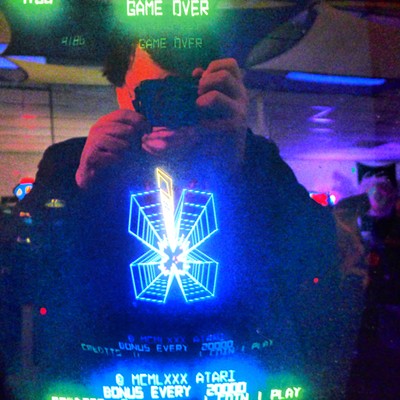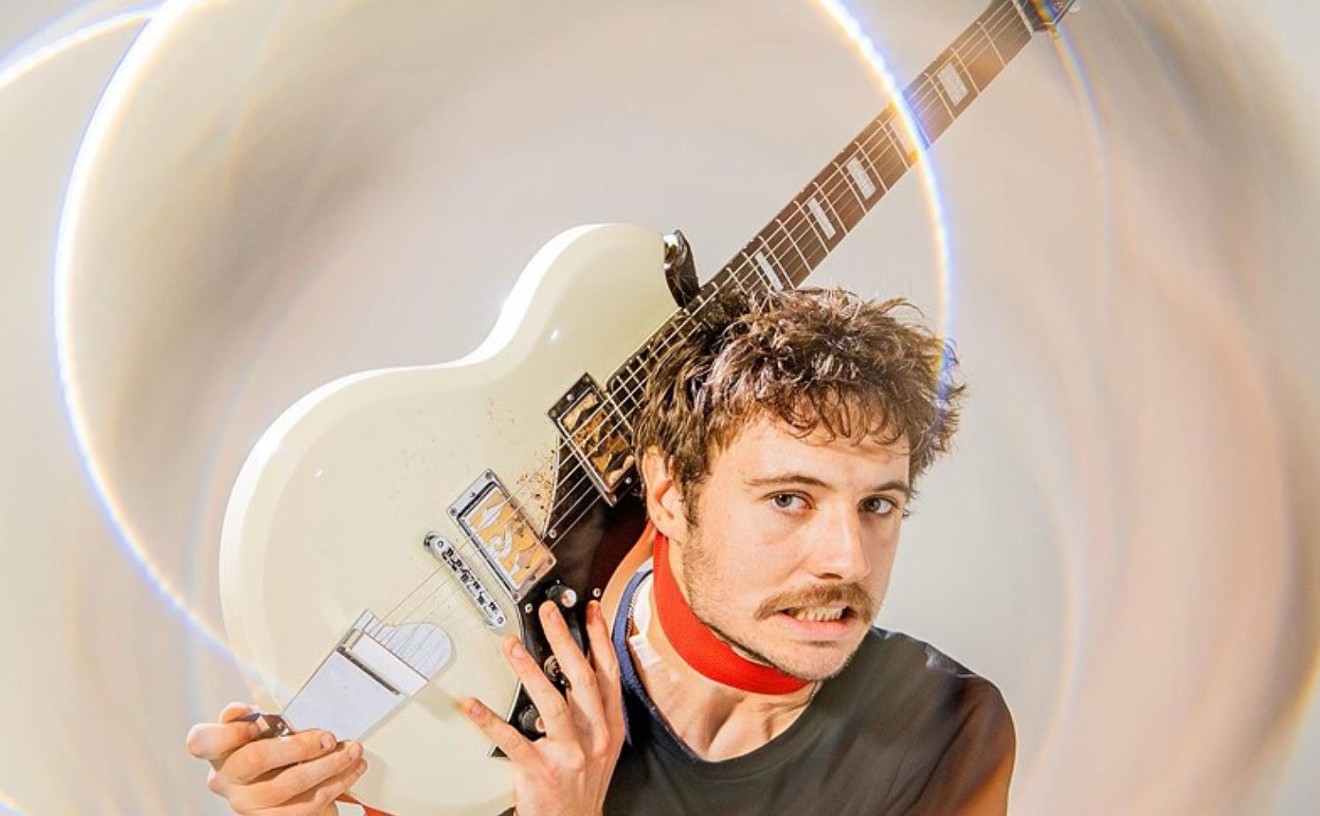Noise rock/no-wave band CP-208 split last month. While that development may not be big news to anyone who didn't like the band (or didn't even know about it), the dissolution quietly marked the end of a certain era of underground music in Denver — because the band's membership and its sound was connected with the DIY scene of an older era of Denver music, one now talked about in the past tense.
In the 2000s, a band of similar sound and intention formed when guitarist Doug Mioducki teamed up with drummer Mike Zorman; later, percussion phenom Andrew Lindstrom of Nightshark renown joined, along with vocalist Justin Kinnet, and Witch Doctor was born. A staple of the DIY venue scene in Denver, Witch Doctor also played dive bars. You either loved the act or kind of hated it: The atonal music coupled with unusual and literary lyrics tended to get under your skin. The group played its final show in August 2007, and Mioducki — who had also been a member of Felt Pilotes, Koala, Sparkles and North Americans — moved to Pittsburgh for a bit before coming back to Denver and staying out of bands for a while. Zorman, too, moved on to greener pastures out of state, as did Kinnett. Lindstrom continued with Nightshark, and now also performs in the Can tribute project Bring Me Coffee or Tea. But somehow, a small legend grew up around Witch Doctor...and soon a new band grew out of it.
Bassist Tiana Bernard and drummer Darren Kulback had been members of the now legendary noise-rock outfit Hot White until that project broke up in the fall of 2011. Both were veterans of the DIY music world and knew Mioducki from the days when he and Bernard worked at Wax Trax; they moved in the same social circles as Tripp Wallin, but also knew him for his brilliant performance-art pieces as Tripp Nasty. The four got together in 2012, creating a band that was initially called Cats and then, as a joke, the Doug Mioducki Experience before finally settling on CP-208. By design, its sound was very similar to that of Witch Doctor. Mioducki's atonal, angular, textured guitar work matched Wallin's signature poetic, free-verse vocals with a complementary atonal range of sounds; it's what made Witch Doctor so great. While CP-208 occasionally played an old Witch Doctor song, it never sounded like a cover to anyone who didn't know Witch Doctor's catalogue of songs well.
Later, Wallin pushed the challenging aspect of the band further by performing in drag at every show. His meticulous attention to detail definitely pushed some buttons and disturbed more conventionally minded folk, but visually it seemed like the perfect complement to the band's music.
But then, on the verge of completing its first album (and, really, the first widely available recordings), CP-208 split up. But in the band's short life, it created something genuinely interesting that went against the grain of what we've been trained to expect out of music. And in that way, CP-208 was a resounding success. Here are some images of the band, from its early days through its later shows.
*Author's Note on the High Plains Underground Archive: In the late 1990s, I started going to local shows on a regular basis. Growing up in the '70s and '80s, I didn't know there was such a thing as local music worth checking out. But I was drawn in after seeing a band called Rainbow Sugar (an all-female punk/hip-hop/experimental guitar rock extravaganza) opening for Sleater-Kinney's first show in Colorado at the Fox Theatre in October 1998. Next, I learned about a show at the now-defunct Rebis Galleries. From there I went to the first Monkey Mania show, and there was no looking back.
Rainbow Sugar was the first local band I photographed at Herman's Hideaway in 1999. But it was in 2005, when I got my first digital camera, that my extensive photo archive started. In this series, called High Plains Underground Archive, I will share a small fraction of the tens of thousands of those photos, focusing on specific venues, bands, time periods, movements and whatever else seems to make sense. The title of this series comes from the working title of my book on the history of underground music in Denver from 1975 to the present.
[
{
"name": "Air - MediumRectangle - Inline Content - Mobile Display Size",
"component": "12017618",
"insertPoint": "2",
"requiredCountToDisplay": "2"
},{
"name": "Editor Picks",
"component": "17242653",
"insertPoint": "4",
"requiredCountToDisplay": "1"
},{
"name": "Inline Links",
"component": "18838239",
"insertPoint": "8th",
"startingPoint": 8,
"requiredCountToDisplay": "7",
"maxInsertions": 25
},{
"name": "Air - MediumRectangle - Combo - Inline Content",
"component": "17261320",
"insertPoint": "8th",
"startingPoint": 8,
"requiredCountToDisplay": "7",
"maxInsertions": 25
},{
"name": "Inline Links",
"component": "18838239",
"insertPoint": "8th",
"startingPoint": 12,
"requiredCountToDisplay": "11",
"maxInsertions": 25
},{
"name": "Air - Leaderboard Tower - Combo - Inline Content",
"component": "17261321",
"insertPoint": "8th",
"startingPoint": 12,
"requiredCountToDisplay": "11",
"maxInsertions": 25
}
]











